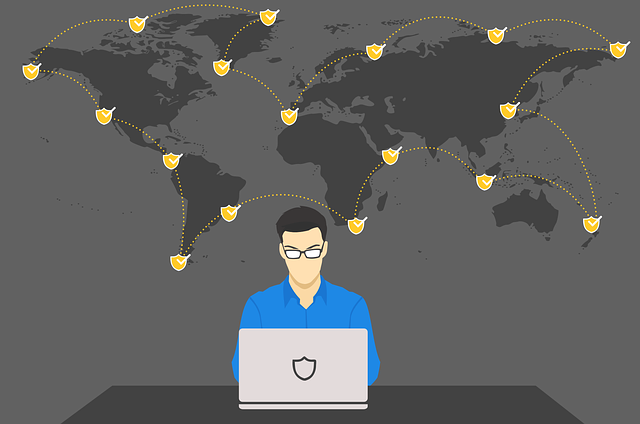Application security
Executive summary
The research report is based on a different perspective of application security which has indicated as the crucial factors to be considered. As the demands and requirements for applications in smartphones have increased rapidly, the need for application security justifies the market growth for the information security system.
The customized services have been interpreted in the format of application testing and code review which indicates the constraints for managing the system. Moreover, the malware system threats have also been minimized through the installation of robust filtering and scanning process which have scanned the whole system to reduce vulnerability.
Application security is characterized as the approach for adding, developing and testing the security features within the applications for prevention of security vulnerable against the modification or unauthorized access.
The principles of application security have been taken as important due to the availability of the applications which are accessed over diversified networks and cloud-connected.
The weakness of the system has also been identified and interpreted through the adaptation of the system which assists the user to prevent data security and breaches (Takanen, et al., 2018).
Application security describes the measurement of security guidelines at the application level which aims in the prevention of coding or data storage from hijacking or stolen. It comprises both software, hardware, and approaches which minimize the vulnerabilities of the security process.
In this report, the overview and types of application security with the market growth of the system are described. Moreover, the challenges for application security are indicated along with the strategies required for mitigating the challenges for the system.

Overview and types of application security
The principles of application security are demonstrated through following the security measures in the applications which resist the data loss or breaching.
Mainly, application security is guarded by the practices of the firewall security system for monitoring the guidelines and actions of cybersecurity. Applying regular testing of the application security system comprises the security protocols which has benefited the users for increasing the firm’s performance (Simpson & Hamer, 2016).
The application security integrates the application development program and external environment for making the workflow frequent and the serviceability of the business has improved.
The main application security tools are indicated as application shielding products and security testing tools. The security testing tools are categorized according to its suitability of testing which are static testing, dynamic testing, interactive testing, and mobile testing.
Static testing analyses the coding process at fixed points at the time of development which assists the developers to rectify their codes. Dynamic testing evaluates the running code which simulates the attacks on production for revealing the complex pattern of attack.
Interactive testing deals with both static and dynamic testing and mobile testing is designed for the environment which focuses on mobile applications and operating systems (Enck, et al., 2011).
Another tool that is used for application security comprises runtime application self-protection, anti-tampering tools and encryption, code obfuscation and threat detection tools (Ping, et al., 2017).
The purpose of testing and shielding has been simultaneously operated through RASP tools which have monitored the application behavior and performance for maintaining security guidelines. The goal of application shielding tools is to strengthen the apps where the attacker cannot get access to the user account.
Market growth of the security system
The market growth of application security has been reflected through authentication and the authorization of the user for allowing access to a particular account.
As the demands and requirements for applications in smartphones have increased rapidly, the need for application security justifies the market growth for the information security system (Archer, et al., 2016). On the other hand, the application security system has also been justified with the principles of encryption for preventing data breaching or data loss.
The testing of application security has also ensured the proper working and control of the system. The volume of data generation has been improved (Kritikos & Massonet, 2016).
From a recent report, it has been identified that 2,000 Skype calls, 5 hours of YouTube videos and 10,000 tweets along with three million Emails have been processed in a single day which has raised the requirement of application security.
The key market trends have also justified the requirement of application security as the demands and trends for the retail sector have been demonstrated individually.
The retail businesses have dealt with a large number of confidential and sensitive data related to credit card, debit card or other accessory details (Chess & Fay, 2015).
The volume of customer data has been increased through setting up the point-of-sale, kiosks, handheld devices that have accumulated a diversified range of connected details.
In the context of North America, the financial crimes for the banking intuitions and other financial sectors have been increased which is estimated to raise as USD 183.29 billion (dos Santos, et al., 2018). The market for application security has been grown by USD 9.64 billion at the end of 2023.
The application of the framework has also been demonstrated in the healthcare sector which is approximately grown by 24.45%. Moreover, the market or system has also facilitated the businesses of small and medium companies by 26.69%.
The major players in the field of application security comprise IBM Corporation, Oracle Corporation, Fortinet Inc., Veracode, and Synopsys Inc.
Challenges related to the application security system
The challenges or constraints for the application security systems are reflected through software application or security, privacy and cyber risks along with ecosystem security.
The strategy and review of cybersecurity along with the assessment of the impact of data protection and building support or designing are demonstrated as the challenges for the security system (Kalaiprasath, et al., 2017).
The risks associated with SQL injections enhance the malicious activities for complying with application security. The principles of cross-site scripting also affect the server and rise the threat of XSS attack. It makes the system more vulnerable and weak which is indicated as the constraints.
The language barriers have been increased for inherited vulnerabilities which have failed the organization of prototype applications.
Moreover, failure in developing formal APPSec planning results lack maintaining documentation of security testing and information (Kritikos & Massonet, 2016). The interpretation of penetration testing and vulnerability analysis are considered as important factors for maintaining ecosystem security.
The customized services have been interpreted in the format of application testing and code review which indicates the constraints for managing the system. Besides, the threats for application security system consist of cross-site scripting, lack of function tracking, speed pressure, failure in team development and formal AppSec planning.
The process does not deal with varieties tools for securing the applications which are included as the challenge for application security framework.
Strategies for mitigating the risks related to the process
Diversified range of strategies has been developed for minimizing the risks related to the application security framework for providing a safe digital environment.
Avoiding the command line call completely assists the management to reduce the risks associated with applications. On the other hand, the responsibility of the administrator comprises reviewing the codes thoroughly for better execution of information securities (Ping, et al., 2017).
The application of one tool which fulfills the criteria for managing the system must be included under risks related to overcoming the process for application security.
The infrastructure for information security has also been improved and the skills or expertise of the employees have been developed for resisting the risks related to the security process. The strategies are also developed through utilizing the application’s vulnerability tools which locate the vulnerable packages for increasing application of coding and improve performance.
The system has also been secured and safeguard by resisting the threats related to the particular process (Takanen, et al., 2018). The malware system threats have also been minimized through the installation of robust filtering and scanning process which have scanned the whole system to reduce the vulnerability and remove the malware process.
The incremental growth of the business has reached to $3.14 billion and yearly growth rate is indicated as 5.33%
From the above study, it has been concluded that the demand for application security has been increased due to the rising number of information involved in the business process.
The application security integrates the application development program and external environment for making the workflow frequent and the serviceability of the business has improved. The testing of application security has also ensured the proper working and control of the system.
The interpretation of penetration testing and vulnerability analysis are considered as important factors for maintaining ecosystem security. The application of one tool which fulfills the criteria for managing the system must be included under risks related to overcoming the process for application security.
Based on the above study, it has been recommended that the risks or threats complying with the application security system should be minimized through the application of secure coding practices.
The applications of stored procedures in the field of events, errors and data should be modified through the system. The SQL injection attacks should be minimized and a negative impact on database management should be removed by applying the stored process only.
Moreover, the management of the businesses and service providers is recommended for integrating the dynamic application testing and source for developing the system and reduces the risks.
Archer, S., Tippett, P., Crawford, G. & Hubbard, P., 2016. Mobile application security assessment. U.S. Patent 9,264,445, 1(1), pp. 12-18.
Chess, B. & Fay, S., 2015. Context-sensitive taint processing for application security. U.S. Patent 9,053,319, 1(1), pp. 114-121.
dos Santos, A., Ribeiro, R. & Silva, F., 2018. System and method for web application security. U.S. Patent 9,979,726, 1(1), pp. 14-18.
Enck, W., Octeau, D., McDaniel, P. & Chaudhuri, S., 2011. A study of android application security. USENIX security symposium, 2(2), pp. 27-38.
Kalaiprasath, R., Elankavi, R. & Udayakumar, D., 2017. Cloud. Security and Compliance-A Semantic Approach in End to End Security. International Journal Of Mechanical Engineering And Technology (Ijmet), 5(8), pp. 987-994.
Kritikos, K. & Massonet, P., 2016. Procedia Computer Science. An integrated meta-model for cloud application security modelling, 1(97), pp. 84-93.
Ping, P., Xuan, Z. & Xinyue, M., 2017. Research on security test for application software based on SPN. Procedia engineering, 4(174), pp. 1140-1147.
Simpson, S. & Hamer, P., 2016. Hewlett Packard Enterprise Development LP. Automated security testing, 276(9), p. 952.
Takanen, A., Demott, J., Miller, C. & Kettunen, A., 2018. Fuzzing for software security testing and quality assurance. 1 ed. London : Artech House.


